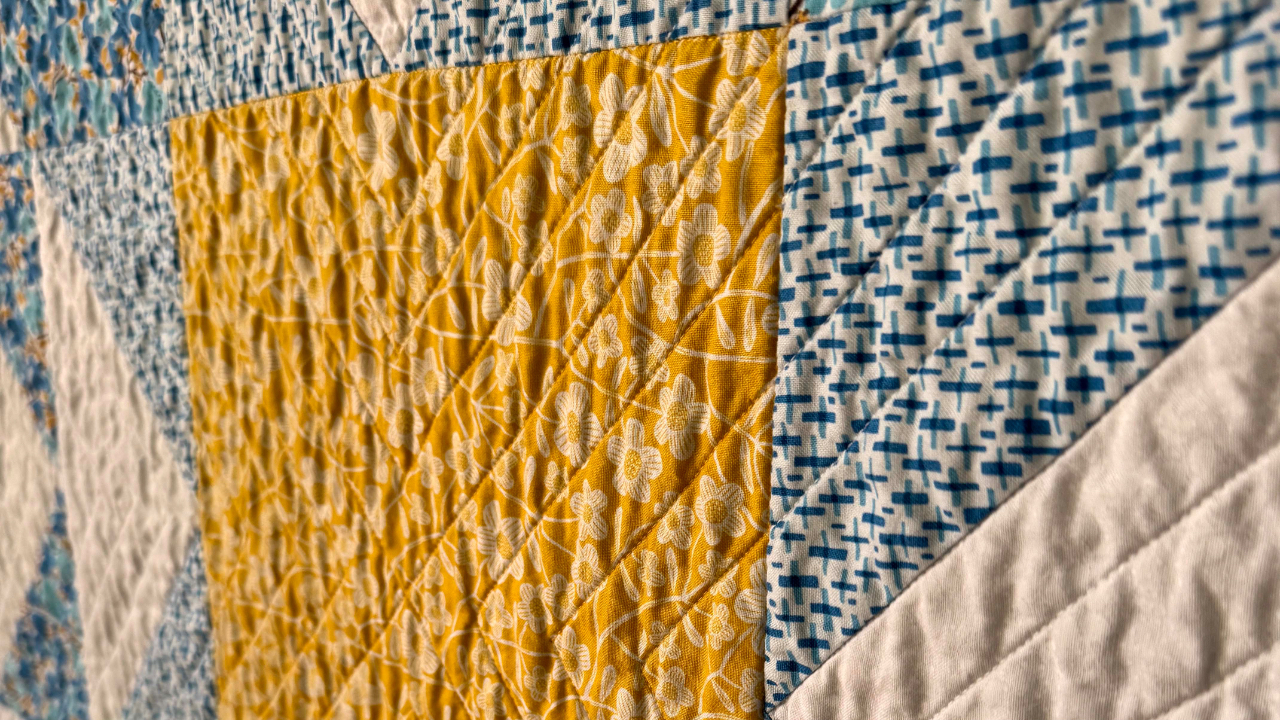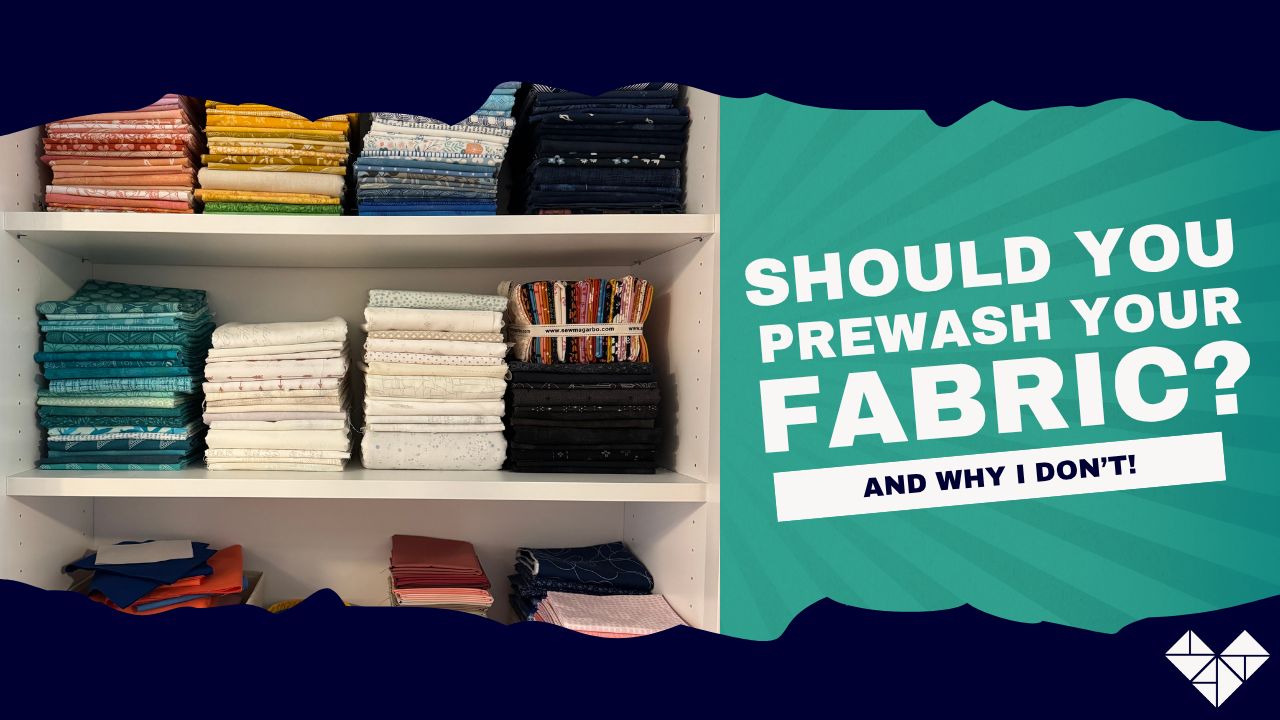
Color is one of the biggest challenges quilters face. So many of us quilt within the bundle because we lack the knowledge to choose color confidently or the courage to step outside the bundle. The good news is that you can learn and perfect color choosing! Today, I'm here with a Color 101 post to lay the foundation of what you need to know to choose color. We'll talk about essential tools, terms like hue and value, and end with an assignment that gets you playing with color right away.
Before we dive in, there are a couple terms you need to know:
- Primary colors: red, yellow, blue
- Secondary colors: These are equal mixes of primary colors to create new hues. Secondary colors are orange, green, and purple/violet.
- Tertiary colors: Tertiary colors are hues of colors on each side of it on the color wheel mixed in equal parts. This includes red orange, red violet, blue violet, blue green, yellow orange, and yellow green.
Essential Tools
Whenever I play with color, I pull out three tools: my color wheel, the Ultimate Color Tool, and my Kona cotton solid color chips.

My color wheel is great for checking hue and value and has a lot of helpful information for determining what kind of color you're working with and color harmonies for creating custom color palettes.

The Ultimate Color Tool was created by quilters at C&T Publishing specifically for quilting color schemes. It has a card for each primary, secondary, and tertiary color with sections for tone, tint, and shade. Once you pick your colors, you can take the tool to your stash to start pulling fabrics.

This, by far, is my most valuable tool for choosing color. One of the best things I ever did was cut up my Kona cotton color card and store them by color in this storage box. If I know I'm making a blue and orange quilt, I can pull from those slots and move chips around until I'm happy with the results. Then I can either quilt in those exact solids or take the chips to my stash to start matching fabrics.
Hue
There are a few color terms you need to know, and hue is up first. Hue is a pure color; no white, gray, or black has been added to it. These include primary, secondary, and tertiary colors where the mix between two other hues is equal. Here are the primary and secondary colors in a color wheel with my Kona chips.

Value
Value is a measure of how dark or light a color is. Colors with high value are lighter, while colors with low value are darker. You want to make sure your quilt has a mix of values to keep all the colors from blending into each other.

My best tip for determining value is to take a picture of your color chips or fabric with your phone and then set the filter to monochrome. Here you can see that orange and corn yellow are lightest while rich red and velvet are the darkest. On the dark side of medium, we have grasshopper and blueprint.
Tint
A color is tinted when you add white to the hue. They are paler than the original color. Pastels are a great example of tinted color. I pulled out all my blue chips and sorted them to find tints of blueprint. (Kona solids are pretty heavy in blue, so this is a great place to start as a beginner.) You can see how each color below blueprint are just lighter versions of this hue.

Tone
You achieve tones by adding gray to the hue. These colors are going to be duller and lower in intensity.

Shade
Shaded colors add black to the original hue. This darkens the color but it is still blue. Here are my color ships for shades of blueprint.

Color Challenge
Are you ready for some fun homework? Take this information to your stash or color chips and start by creating a color wheel of your own. Extra credit for adding in tertiary colors! Then work on creating tones, tints, and shades of one of the colors in your color wheel. Snap a pic of your progress and tag me on Instagram. I'm @loveofthread over there.
This post includes affiliate links. While you aren't charged extra, I do earn a small commission to add to the fabric budget. Thanks!






